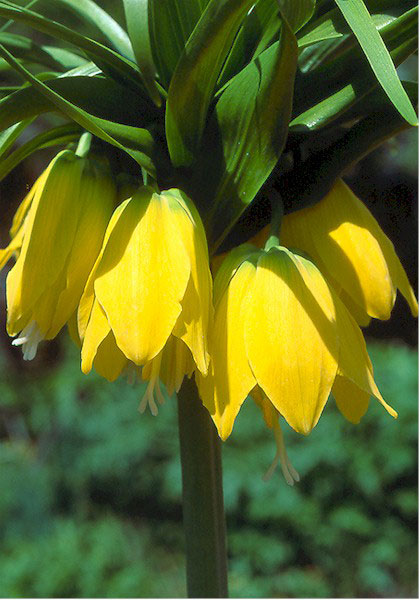|
|


|
|
Crown imperials are woefully under-appreciated today. Yellow ones like ‘Lutea’ grew in Williamsburg by 1739, and the Prince nursery of Long Island listed 22 different kinds in 1830. Their height is dramatic, their skunky smell soon fades (we actually like it), and our bulbs are big and superb. To get them to return, give them well-drained soil. 3-4 feet, zones 5a-7b. Holland. Last offered in 2002. Widely available elsewhere. |
|
SUB TYPE wildflower ZONES 5a-7b BLOOM SEASONS spring LIGHT full sun |
PLANTING & CAREPlant ASAP when you receive them in October. Though our snake’s-head bulbs are wax-dipped — which helps a lot — they are naturally small, fragile, tunic-less bulbs that are never happy in storage. If you absolutely have to, store them briefly in their closed bags in the refrigerator (but not the freezer) — and keep your fingers crossed. Plant 3”-5” deep — some experts say the deeper planting leads to better flowering — and 4”-6” apart in a lightly shaded site with moist, humus-rich soil. Consider protecting with plastic netting, chicken-wire, etc., for a few weeks after planting when they’re most attractive to animals. Mulch lightly, if at all. Mulch is often too thick or heavy for small bulbs such as snake’s-heads and their growth will suffer — if they emerge at all. Water well, and then assure even moisture in spring and fall. Even in the summer, unlike most bulbs, snake’s-heads don’t want bone-dry soil. Fertilize occasionally. After bloom, allow the seed heads to mature and scatter their seeds. In the right spot snake’s-heads will spread by seeding themselves about rather randomly (and charmingly). Learn more about growing and enjoying snake’s-head fritillaries at our Fall Diverse Newsletter Archives. |

|
SPRING
|
· |
SUMMER
|
· |
FALL
|
· |
LEARN MORE
|
· |
ORDERING
|

|










